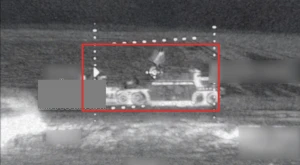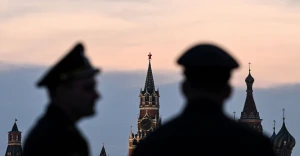
How much Zircon missiles cost and how many can Russia produce?
The price of the 3M22 Zircon hypersonic missile makes it not just "golden", but truly "diamond" in terms of costs
For the Russian Federation, the development of the 3M22 Zircon missile was an extremely complex, expensive and resource-intensive task, requiring the creation of its main element - a scramjet hypersonic engine that allows the Zircon to move at Mach 5.5 speed (4,219 mph) on the launchpad. To this must be added the solution of such technical problems as hull overheating, orientation and navigation in the extremely extreme requirements of hypersonic flight, Defense Express says.
"Be that as it may, this is now a weapon that exists in metal, in which billions of dollars have been invested and decades of research work conducted by dozens of scientific institutions. It is another matter that as a result, Zircon cannot fulfil its original goal of breaking through missile defense. And to get it into service, the Russian Ministry of Defense and the Tactical Missile Arms Corporation pulled off a major scam and falsification," experts point out.
Given that everyone received money, bonuses, awards and promotions, and most importantly, orders for the development, testing and adoption of the Zircon, in any case, both the so-called Russian Ministry of Defense and representatives of the Russian military-industrial complex will pretend that nothing happened and continue to replicate fairy tales about the ’there are no analogues'.
Therefore, we should really expect Russia to continue Zircon attacks. Therefore, we should understand the price of the 3M22 Zircon and its production capacity.
"If we compare it with the hypersonic Kh-47 Kinzhal, which is a solid-fuel missile that only accelerates to hypersonic speeds, a missile with a scramjet hypersonic engine will cost many times, if not an order of magnitude, more. The technological difference between these two products is like that between a Grad rocket and a Tomahawk cruise missile," the analysts emphasize.
To understand the order of magnitude of the development costs, we can refer to the US experience with the Hypersonic Attack Cruise Missile (HACM), a missile with a similar straight-through hypersonic engine. Currently, the Pentagon has allocated $985 million to Raytheon for the development of the finished product alone, excluding parallel basic research, in 2022 and another $407.6 million in January 2024.
This cost should also be added to the future costs of preparing for mass production for the United States. And if we take into account all the estimated costs of hypersonic weapons, the Pentagon has budgeted $4.7 billion for this research and development in 2023 alone.
Therefore, one of the methods of estimating the cost of a weapon unit, taking into account the cost of its development in relation to Zircon, will show simply staggering figures. At the same time, the price per unit without this parameter is also comparable to the cost of experimental missiles with similar straight-through hypersonic engines. In particular, in the US, there are estimates of the price of the X-51A Waverider test rocket at $11-20 million per unit, with a total cost of the program of $200 million, which consisted of four launches.
Thus, in general, we can cautiously assume that in the current conditions for the Russian Federation, the cost of the 3M22 Zircon can easily amount to tens of millions of dollars. And if we take into account the cost of development divided by the number of units produced, we can get quite astronomical figures.
It should be noted that some Ukrainian media are actively replicating estimates of the cost of Russian missiles that are detached from reality, for example, $13 million for the Kh-101 cruise missile. At the same time, accurate cost figures and even the chances of finding them are impossible due to the complete classification of any defense spending in Russia in 2020.
As for the number of 3M22 Zircon missiles that Russia can produce, data from the Defense Intelligence of Ukraine can help with this, with an estimate of 6 Kh-47 Kinzhal production as of the summer of 2023. However, at the initial stage of their production in 2022, only 20 of these missiles were produced in 10 months, i.e. 2 per month.
"Given that the 3M22 Zircon is more expensive and resource-intensive than the Kh-47 Kinzhal, and is also at the stage of initial production, it can be assumed that the production rate of these missiles is even lower or equivalent, ranging from one dozen to several dozen per year," Defense Express concludes.
- News














































